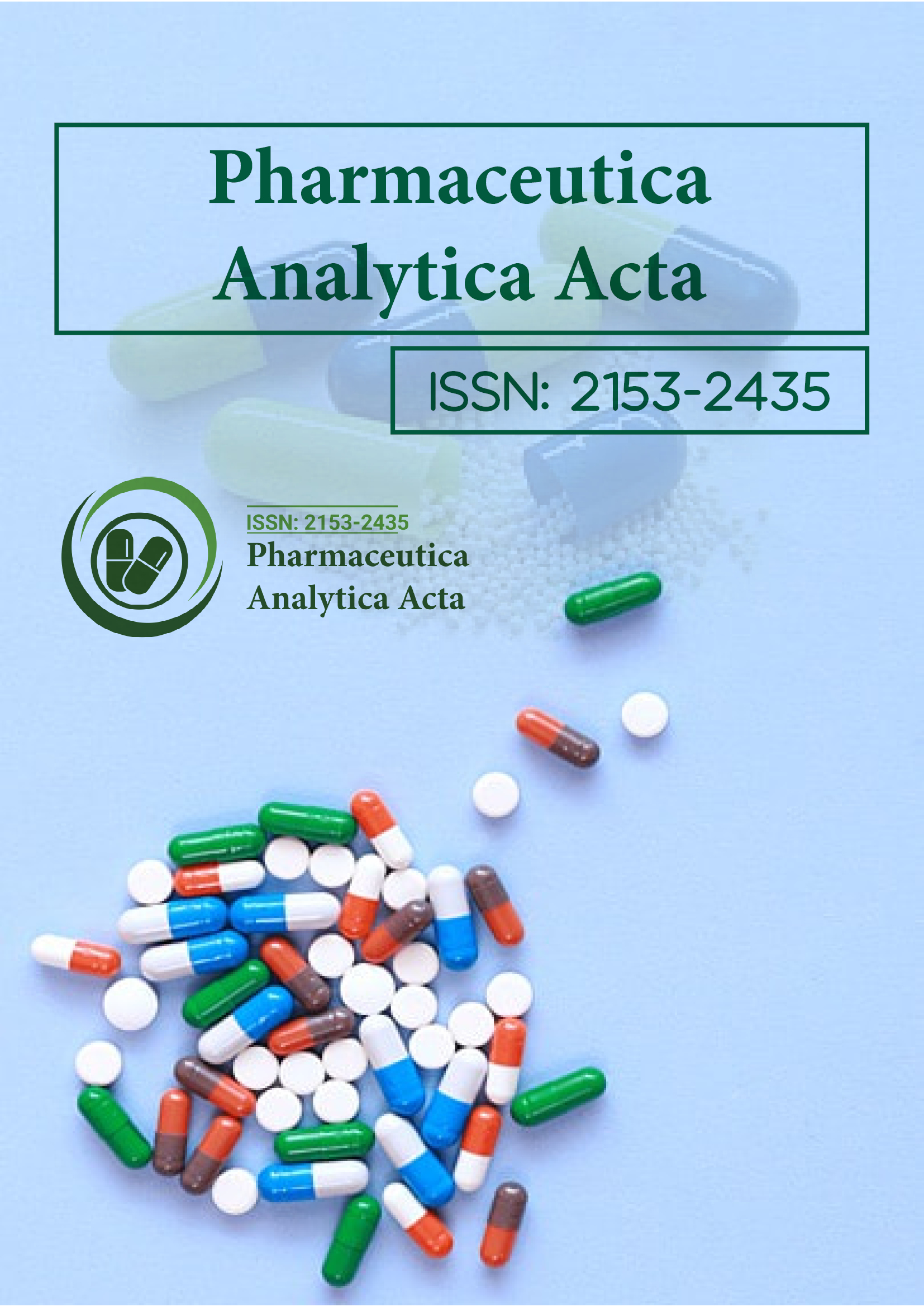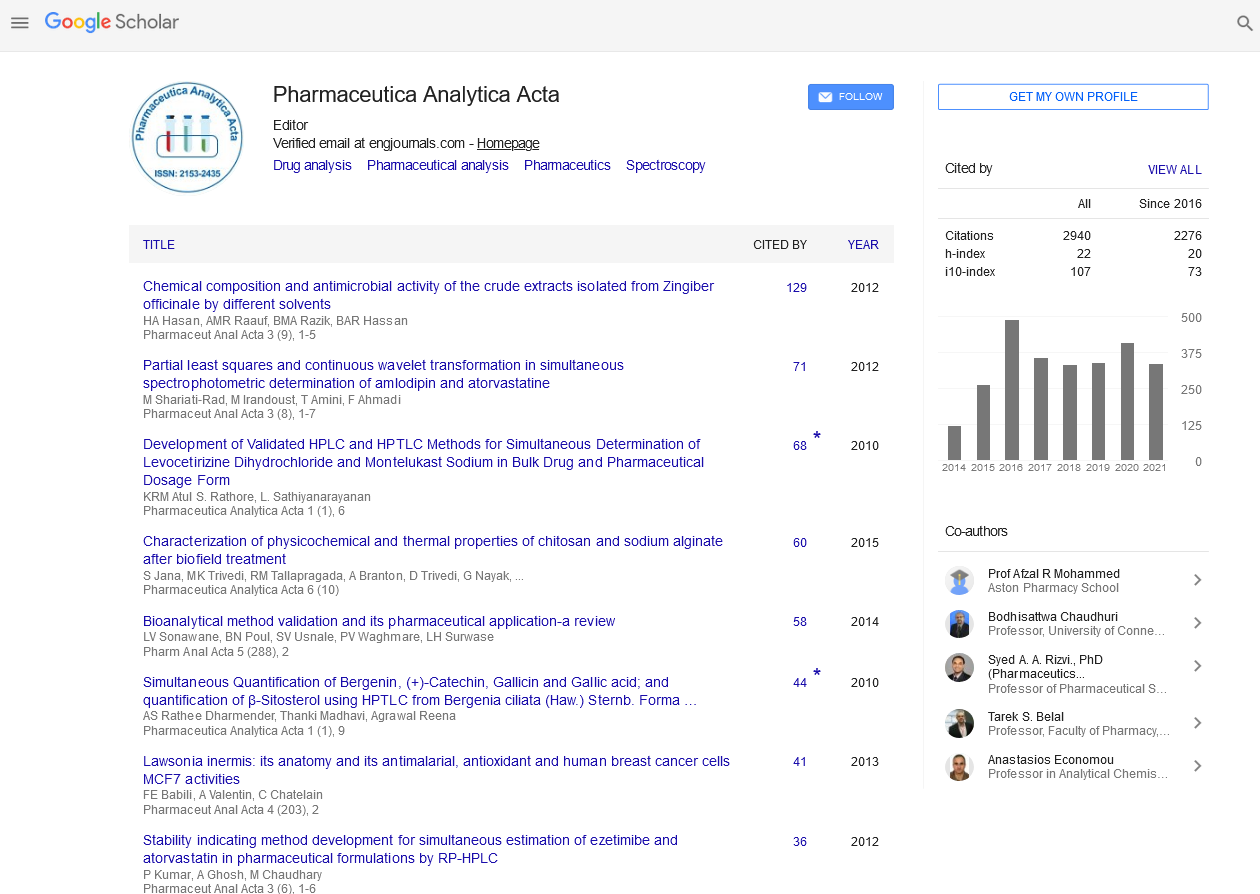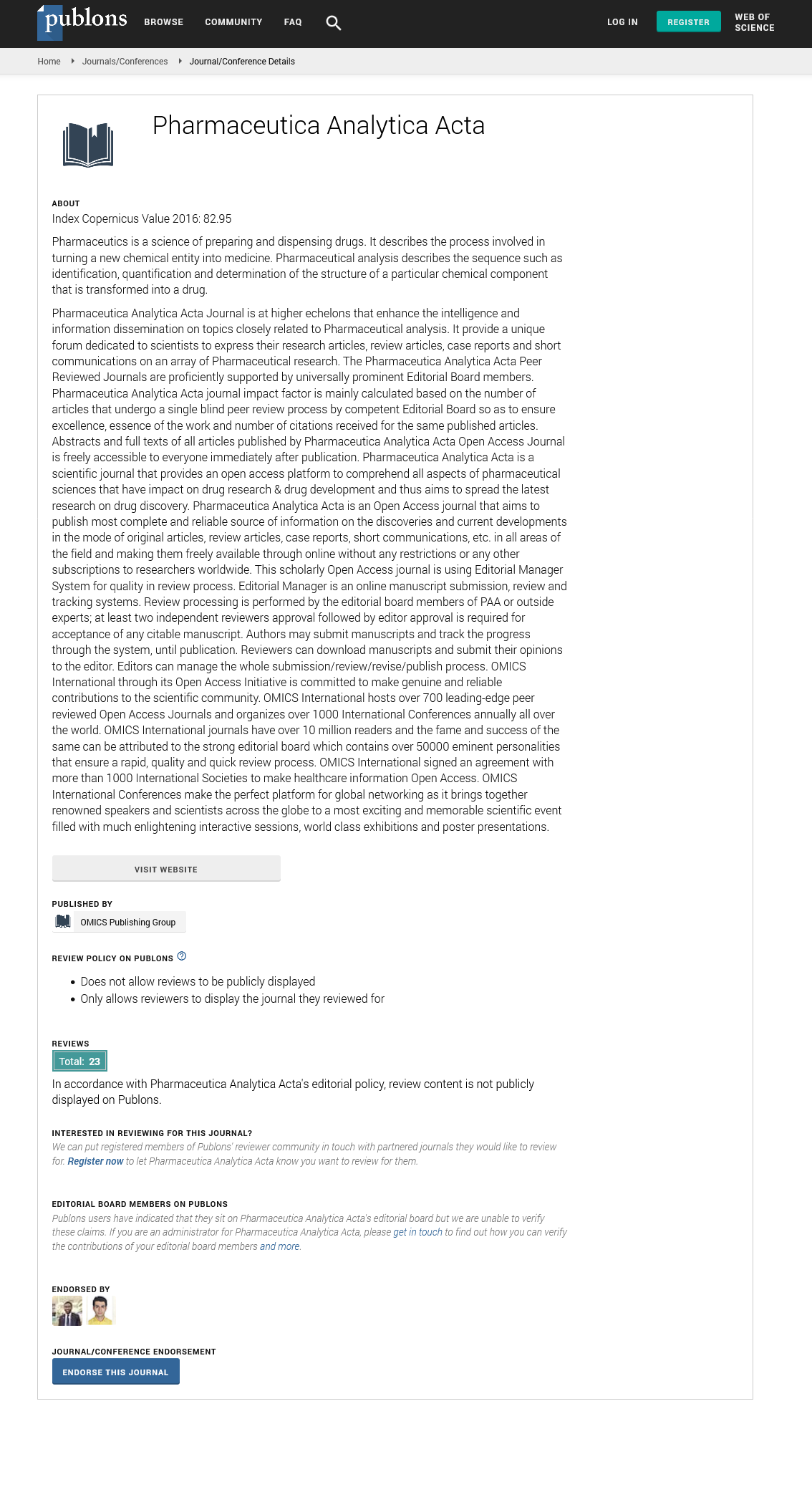Indexed In
- Open J Gate
- Genamics JournalSeek
- Academic Keys
- JournalTOCs
- The Global Impact Factor (GIF)
- China National Knowledge Infrastructure (CNKI)
- Ulrich's Periodicals Directory
- RefSeek
- Hamdard University
- EBSCO A-Z
- OCLC- WorldCat
- Publons
- Geneva Foundation for Medical Education and Research
- Euro Pub
- Google Scholar
Useful Links
Share This Page
Journal Flyer

Open Access Journals
- Agri and Aquaculture
- Biochemistry
- Bioinformatics & Systems Biology
- Business & Management
- Chemistry
- Clinical Sciences
- Engineering
- Food & Nutrition
- General Science
- Genetics & Molecular Biology
- Immunology & Microbiology
- Medical Sciences
- Neuroscience & Psychology
- Nursing & Health Care
- Pharmaceutical Sciences
Construction of a model for discriminating drugs with intestinal metabolism based on chemical structures and PK parameters
2nd World Congress on Bioavailability & Bioequivalence: Pharmaceutical R & D Summit-2011 and International Conference on Pharmaceutics & Novel Drug Delivery Systems
06-08 June 2011, Las Vegas, USA
Yoshihiro Uesawa
Scientific Tracks Abstracts: PAA
Abstract:
CYP3A is a major enzyme for drug metabolism in human intestine. On the other hand, grapefruit juice (GFJ) increases plasma concentrations of a diverse kind of drugs because it inhibits intestinal CYP3A. However, many CYP3A substrates void of the risk of interaction have also been reported. It is believed that these drugs are insusceptible to intestinal metabolism despite being CYP3A substrates. Predictions of the interactions are useful to discriminate drugs that undergo intestinal metabolism. Th erefore, the relationships between structural properties and the interaction were studied. Clinical studies on the GFJ-interactions appearing in PubMed were analyzed exhaustively. Each drug was checked for the interaction, and the PK parameters including the bioavailability (BA) were investigated. Furthermore, the physicochemical properties were calculated from the structure. Th ese parameters were used to construct a discrimination model by a random forest method. Forty seven CYP3A- substrates (including drugs without the interaction potency) were extracted. BA was a signifi cant factor for classifying the potency of the interaction. Th e discrimination model including BA and logD was capable of detecting drugs undergoing intestinal metabolism with a high success rate. It is believed that the present model is useful to estimate drugs with/without intestinal metabolism.
Biography :
Dr. Yoshihiro Uesawa received his Ph.D. from the Graduate School of Pharmaceutical Sciences, Kyoto University, Kyoto, Japan in 1992. He has been an Associate Professor/ Lecturer at Meiji Pharmaceutical University since 2003. His major areas of research are related to pharmaceutical interactions between medications and foods, and analyses of quantitative structure-activity relationships (QSAR). In September of 2009, he became one of the fi rst- pass winners in the ?Environmental Toxicity Prediction Challenge?, an international QSAR competition, organized by ICANN?09: International Conference on Arti fi cial Neural Networks, European Neural Network Society (ENNS) and CADASTER project


